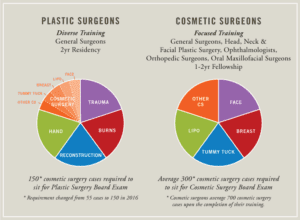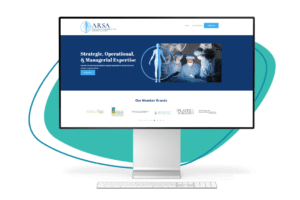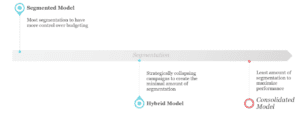It is human nature to chase beauty and perfection. Therefore, the demand for cosmetic surgery services will never cease unless humankind goes extinct. As a result, the global cosmetic surgery market is expected to have a 9.6% compound annual growth rate from 2022 to 2030.
Table of Contents
- The Importance of Digital Marketing to Plastic & Cosmetic Surgeons
- Website: Your Digital Front Door
- Get Discovered With SEO
- Own Your Cosmetic Surgery Center’s Digital Reputation
- Total Alignment in Plastic and Cosmetic Surgery Practices
- Get the Most Out of Cosmetic Surgery PPC Campaigns
- Social Media Advertising For Cosmetic Surgery Centers
- Add Video Marketing to Your Campaign
- Measuring Cosmetic Surgery Marketing ROI
- Conclusion
Increasing demand means harsher patient acquisition competition. Therefore, your practice group must have an effective and scalable cosmetic and plastic surgery marketing strategy focusing on expanding online visibility and enhancing the patient experience.
The Importance of Digital Marketing to Plastic & Cosmetic Surgeons
Cosmetic surgeons and plastic surgeons may seem similar, but they each have their own specialties. Plastic surgery focuses on the reconstruction of facial or body defects due to birth disorders, trauma such as burns from fire accidents, and illnesses like melanoma skin or breast cancers.
In contrast, cosmetic surgeons specialize in enhancing a patient’s appearance with procedures ranging from facelifts, breast implantation, and rhinoplasty.
However, both need to use the internet to reach potential patients.

There are a number of reasons why someone might not be aware of the surgeries that can help them. It could be that they don’t know such surgeries exist if they’re new. Or they may not have access to reliable information about these procedures. As a result, they may never learn about the potentially life-changing benefits that these surgeries could offer. This is where digital channels can play an important role, and help you educate consumers and build demand for your services.
When it comes to complex and challenging surgical procedures, patients want to be sure that they are working with the absolute best surgeon. Thanks to the Internet, they can now conduct extensive research to find the surgeon who meets their needs. As a result, it is more important than ever for surgeons to ensure they are visible online and provide accurate and reliable information about their services. Doing so can ensure that patients have the information they need to make informed decisions about their care.
Website: Your Digital Front Door
Websites are vital for plastic and cosmetic surgery providers because that’s the first place consumers look to learn more about you.
According to a recent survey, website experience influences 97% of decisions made by consumers. A well-designed website that provides a better user experience often leaves the site visitor with a positive first impression. Similarly, a poorly-designed website often makes visitors think the business is careless and unprofessional.
Make Your Images Shine
Think of how people look for new lipsticks or eyeshadows. Likewise, plastic surgery marketing strategies should heavily focus on visuals for the same reasons. Therefore, high-quality images are essential for cosmetic surgery websites.
If you offer cosmetic plastic surgery, show your audience the before and after, highlighting the new and improved features of your patients. Meanwhile, if you offer reconstructive services, nothing speaks more than a comparison with and without traumatic wounds.
Also, optimize your images for mobile viewing and SEO purposes. For example, fill out descriptive alt text to improve accessibility and double-check image size and resolution on mobile devices. Your photographs should load fast and look good on all devices.
Plastic Surgery Website Best Practices
Of course, you can implement other best practices to optimize your website further. Some top tactics include
- Use a simple and easy-to-navigate site architecture that makes it easy for users to find information.
- Optimize for the mobile with responsive designs and fast-loading content.
- Create multiple ways to convert, including contact forms, direct calendar booking, click-to-call, etc.
- Use sticky CTAs, so it’s easy for users to contact you on any device.
- Provide comprehensive, robust information on treatment programs, surgeon credentials, organization information, and more.
- Showcase success stories and testimonials with photographs.

Learn more about how we helped Tolson Center for Cosmetic Surgery
Get Discovered With SEO
Now that you have an optimized website, it’s time to expand your digital presence so consumers can discover your services while researching. Indeed, the best way to get discovered is by investing in SEO.
On-Page and Technical SEO
On-page and technical optimization builds a solid foundation for your keyword strategy to show its power. It also allows your existing website to perform at its maximum without creating any new content.
When we worked with renowned plastic surgeon Dr. Cristina Keusch, we started with on-page and technical SEO. We cleaned up non-www URLs and the XML sitemap, created a robust internal content link structure, improved page speed, created unique SEO titles and meta descriptions for each page, and optimized for mobile performance. As a result, we gained a 9.5% increase in site visits, displacing many competitors on the SERP.
Full-Funnel Content Strategy
Plastic surgeons should create a full-funnel content strategy with a heavier focus on MOF and BOF content. Start with keyword research and separate them based on funnel position.
Some top-of-the-funnel (TOF) keywords that can generate demand for cosmetic surgery:
- Is it safe to get your boobs done?
- Are scar removal surgeries legit?
- How old do you need to be to get plastic surgery?
Middle-of-the-funnel (MOF) keywords:
- Do I need open or closed rhinoplasty?
- Are one-stitch facelifts effective?
- What is the recovery time for liposuction?
- How much does lip augmentation cost?
Bottom-of-the-funnel (BOF) keywords:
- Plastic surgeon near me
- Burn scar removal near me
- Certified cosmetic surgeons boston
You can develop blog content to create TOF content, while MOF and BOF content is communicated through your service and location pages.
As long as you stick to the full-funnel content strategy supported by a comprehensive keyword list, your web pages will soon become visible in front of people looking for an answer. Moreover, you can also use high-intent keywords and local keywords in Google PPC campaigns (more on that below).
Local SEO
While building up your long-term SEO results, don’t forget the low-hanging fruits — Yes, we’re talking about local SEO.
A recent study found that about 63% of patients prefer a provider closer to their home. Therefore, local SEO can effectively fill up your pipeline by capturing high-intent BOF leads in your target areas.
A few great methods to build your local visibility are
- Creating citations and listings on trustworthy platforms like Zocdoc and TripAdvisor
- Optimizing your Google Business Profile (formerly Google My Business)
- Creating a geographical keyword strategy
- Optimize your website’s location pages

Whether it’s your listings, GMB profiles, or location pages, always use information unique to each location instead of general copy. For example, provide detailed descriptions regarding your treatment programs, practicing surgeons, insurance, and payment policies for each specific practice location.
Learn more about optimizing your website for search
Own Your Cosmetic Surgery Center’s Digital Reputation
Like all other healthcare services, your reputation could make or break you. Consumers are highly critical of plastic surgery because it is, after all, an intrusive procedure that can impact how they’re viewed in the world. Whenever there are risks involved, consumers tend to be more cautious.
A study found that 90% of patients use online reviews to help them decide. The same study also found that 43% of patients would even go with an out-of-network provider if they have excellent reviews. An outstanding online reputation also helps you get more high-quality referral leads.
Online Reputation Management Best Practices
Start by collecting more positive reviews via review farms, asking in-person at the checkout desk, or leveraging a review solicitation software.
Once you have some quality reviews, showcase them on your website’s About Us or testimonial section. Alternatively, highlight them on your GMB and directory listings. You should also add press or professional recognitions your surgeons received to your media or blog section.
Meanwhile, pay attention to complaints and take the initiative to resolve the problem. Your response could still highlight your professionalism even if the patient refuses to change the negative review.
Total Alignment in Plastic and Cosmetic Surgery Practices
In the hyper-competitive field of plastic and cosmetic surgery, aligning marketing efforts with operational realities should be a standard. This alignment creates a cohesive strategy that benefits your entire organization, from patient acquisition to service delivery.
Key Areas for Alignment
1. Aligning with Your Capacity
Have you ever wondered why some practices always seem busy while others struggle? The key often lies in understanding and aligning with practice capacity. Without this alignment, issues like overbooking popular procedures or underutilizing specialized equipment can arise. How can you ensure your marketing efforts sync with your true capacity? Are your schedulers and surgeons regularly communicating with your marketing team?
To make sure your marketing aligns with your practice capacity:
- Maintain open communication between marketing and scheduling teams
- Provide regular updates on surgeon availability and procedure slots
- Adjust marketing strategies based on current capacity for specific treatments
2. Aligning with Your Services
Ever wonder why some plastic surgery practices seem to have a perfect mix of services? Marketing teams need a deep understanding of various cosmetic procedures to create effective strategies. It’s all about understanding what patients want and what’s best for the practice.
Think about it: non-invasive treatments might be quick wins, but surgical procedures could lead to long-term patient relationships. And don’t forget the add-ons! A smart practice might promote popular treatments like breast augmentation, but also remind patients about post-surgery skincare.
3. Aligning with Your Brand Messaging
In my experience, your marketing messages must mirror your practice’s true capabilities. I’ve seen how misalignment can set unrealistic expectations, leading to disappointed patients. My advice? Work hand-in-hand with your surgeons and staff to craft campaigns that honestly reflect your expertise, recovery times, and likely outcomes.
Remember, authenticity builds trust. Ask yourself: Are your marketing promises something your team can consistently deliver on?
4. Aligning with Your Tech Capabilities
I’ve seen many practices jump on new tech without considering the full picture. Trust me, while that shiny new 3D imaging software might seem like a marketing dream, it can throw your team for a loop if they’re not prepared.
My advice? Bring your clinical staff into the conversation early. Let them see how virtual consults or 3D imaging can enhance patient experiences. But also listen to their concerns about workflow changes. Remember, a tool is only as good as the team using it.
Strategies for Achieving Alignment
Fostering ongoing communication is crucial. Hold regular meetings between marketing teams and surgeons to discuss upcoming promotions, new techniques, or equipment investments. Moreover, use data-driven decision making by analyzing patient demographics, popular procedures, and seasonal trends to inform both marketing strategies and operational planning.
Understanding utilization rates for different procedures and equipment is also key. By analyzing how efficiently the practice uses its resources, you can identify opportunities for growth. This might involve expanding hours for in-demand non-surgical treatments or investing in additional technology to meet patient demand.
Focus on shared goals, such as:
- Ensuring high-quality care and satisfactory outcomes for every patient
- Maximizing surgeon and equipment utilization
- Driving sustainable growth in both surgical and non-surgical offerings
Why Alignment?
When marketing and operations work in harmony, plastic surgery practices can see significant benefits. Improved patient satisfaction is a key outcome, as patients experience a seamless journey from initial inquiry to post-procedure care. Better outcomes often follow, as resources are allocated more efficiently and patient expectations are better managed from the outset.
From a business perspective, this alignment leads to more efficient resource allocation. As a result, marketing efforts are directed towards procedures and services where the practice excels, while operational resources are used more effectively to meet patient demand and maintain high standards of care.
Total Alignment for Elevating Your Marketing Campaign
To put in bluntly, practices that successfully align their marketing and operational strategies will be better positioned for long-term success. By basing growth goals on actual capacity, reducing variability in patient experience, and fostering collaboration between marketing teams and clinical staff, practices can create a more efficient, effective, and patient-centered approach to growth.
Remember, alignment is an ongoing process that requires continuous effort and adaptation. However, the rewards – in terms of improved patient satisfaction, operational efficiency, and overall practice success – make it well worth the investment.
Get the Most Out of Cosmetic Surgery PPC Campaigns
SEO takes time to show results; it’s not something you can build in a month and get immediate results. That’s where Google PPC campaigns come in.
Google Ads are great ways to capture high-intent leads at their decision-making moment. It places your plastic or cosmetic surgery at top of the SERP and could have a significant return if combined with an effective website.
Choosing Your Account Structure
Define your target audience based on your advertising goals, budget, and available services. Then, it’s time to build your account structure.
Today’s Google Ads account structure is a spectrum going from consolidated to segmented. A consolidated account features larger ad groups to maximize impressions. The primary advantage is how rapidly consolidated accounts collect data for Google’s AI-powered bidding tool to optimize your spending. Meanwhile, a segmented account gives you more control and works great with multi-location plastic surgery groups that designate separate budgets for each location.
Nonetheless, plastic surgery providers most frequently use a hybrid account to take advantage of the consolidated structure’s efficiency and the segmented structure’s overall control.

Optimizing For a Better Performance
A/B testing is always a great way to optimize your Google PPC campaigns. Try different ad messaging, extensions, ad formats, and landing page optimizations to find the winning combinations.
Meanwhile, optimize your ads for a better mobile experience because most consumers nowadays are researching on their phones. Similarly, call-only ads can capture mobile leads when their buying intention peaks.
Finally, create unique landing pages for each campaign following all website best practices. Ensure your patients receive information that aligns with their search intent and makes conversions easy.
Learn more about PPC best practices and strategies
Social Media Advertising For Cosmetic Surgery Centers
Cosmetic surgeons should develop a visual-centric social media marketing strategy. Therefore, Facebook, Instagram, TikTok, and even Pinterest are all great platforms to explore.
Tailor your organic social content for TOF and MOF consumers. Use appealing images like before-and-after comparisons to generate interest and demand. Meanwhile, showcasing positive reviews and patient success stories establish your credibility.
At the same time, develop a full-funnel paid social strategy to cover every step in your patient journey. However, only tap into paid social media ads after you’ve maximized your BOF lead capturing with Google PPC campaigns!
Add Video Marketing to Your Campaign
The cosmetic and aesthetic medical space is teeming with competition, so you need all the help you can get to stand out. In this case, video content is an excellent marketing fit for aesthetic doctors and plastic surgeons. With the popularity of platforms like TikTok and YouTube, it’s clear that video marketing is here to stay, and practices that don’t adapt will be left behind.
Video Marketing for Cosmetic Surgeons Best Practices
One of the best ways to leverage video content for plastic surgery is through patient reviews and testimonials. You can politely ask patients with successful procedures to contribute to your video by relating their experiences. The key is to have a sincere video and not look awfully rehearsed.
In addition, you may also produce “A Day in the Life” videos where you can showcase your facility, equipment, and hardworking staff. Authentic and relatable video content helps humanize your brand and form deep connections with prospective patients.
Measuring Cosmetic Surgery Marketing ROI
You need visibility and clarity to create a sustainable plastic and cosmetic surgery marketing strategy that grows with your business. But, on the other hand, you also need data to find the underperforming campaigns so you can focus your spending and effort on ones with higher returns. Therefore, you can almost say data-driven marketing is the bread and butter of long-term performance and increased ROIs.
So, how should you measure your campaign performance?
Better marketing measurement requires you to focus on your organization’s people, activities, data, metrics, and technologies. Therefore, you need to centralize all data into one place and integrate your systems. Build a visualization dashboard with sharable and collaborative reports. Invest in analytics software that allows more effective communication within your marketing team and across departments.
Implementing Closed-Loop Reporting (CLR)
Plastic surgery centers should implement CLR like other healthcare providers to form informed, actionable insights. Before you launch a new campaign, you should understand what affects your audience’s decision-making process. And that’s exactly what CLR provides.
When implementing CLR, choosing the right attribution model based on your goal is the key to success:
- The first touch model tells you where patients come in. This provides insight into what campaign format is the most effective in getting the audience to respond.
- The last touch model tells you your patients’ preferred way to convert. Do they call you? Do they use your booking link? Therefore, this model can help you determine what format CTA you should use.
- The linear model works like a map since it attributes acquisition credits equally to each interaction your patient had until the final conversion.
- The multi-touch model is the most comprehensive and helps you to evaluate campaign efficiency throughout a patient’s journey by assigning proportioned credits to each step.
Learn more about closed-loop reporting
Conclusion
With plastic surgery marketing, patient experience always sits at the core. Build a robust website with appealing visuals and images to showcase the results your surgeries achieve, then leverage SEO, Google PPC, and social media to reach your consumers.
Once they’ve seen the results, capture them with a seamless patient experience and an undefeatable reputation. Then, be on point with your marketing and operations alignment to bolster patient acquisition. Why would anyone look at your competitors ever again?

